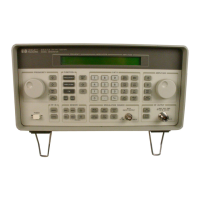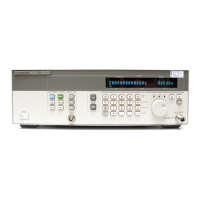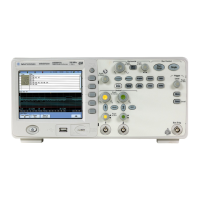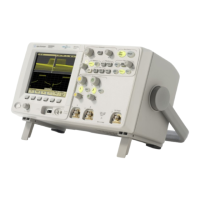57
S:\Hp8960\E1962B CDMA 2000\Pi Release\Reference Guide\Chapters\cdma2000_meas_fstab_desc.fm
Frequency Stability Measurement Description
Frequency Stability Measurement Description
How is a frequency stability measurement made?
The Frequency Stability measurement measures the transmitter frequency and frequency error of analog
signals (including AMPS) with a 1 Hz resolution. Frequency Error is determined by comparing the frequency
of the measured signal to the expected frequency. These parameters are determined by the receiver control
settings (see “Manual Receiver Control Parameters” on page 194).
Operating Considerations
This measurement is performed with the test set’s CW operating mode (see “CALL[:CELL]:OPERating” ).
This measurement is not used for digital signals.
For the best accuracy, connect the timebase of the signal source with the test set’s timebase. See “10 MHZ REF
IN” on page 691 and “10 MHZ REF OUT” on page 691.
Input Signal Requirements
The received signal’s frequency must be within the interval 293 MHz to 2.7 GHz and be within 200 kHz of the
expected frequency. See “Measurement receiver frequency” on page 195.
The power level of the signal source must be between -30 to +43 dBM and be within 3 dB of the expected
power. See “CW receiver power” on page 194.
If the received signal has FM, the modulation index must be no greater than three and the modulation
frequency must be between 100 Hz and 15 kHz.
Worst Case Frequency Error
Frequency and Frequency Error measurement results are returned over GPIB in units of Hz. Worst Case
Frequency Error, the greatest error measured during the total sample(s), is returned in units of ppm (parts per
million). Worst Case Frequency error is only displayed on the test set’s display when multi-measurements are
used, but is always available via GPIB (regardless of the multi-measurement state).
Triggering
Triggering is always immediate for this measurement. Trigger Delay and other trigger sources are not used.
Related Topics
“READ? Subsystem”
“SETup:FSTability”
“INITiate”
“FETCh:FSTability”
“Receiver Control”
“Test Adherence to Standards”

